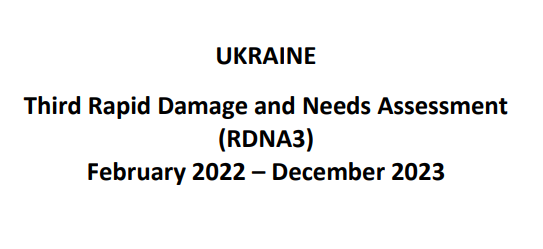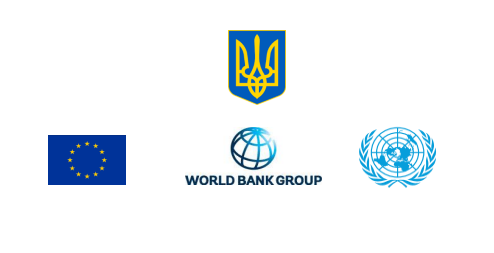

The Third Ukraine Rapid Damage and Needs Assessment (RDNA3), covering period between February 24, 2022, and December 31, 2023, was jointly prepared by the World Bank, the Government of Ukraine (GoU), the European Union (EU) services, and the United Nations (UN) in coordination with humanitarian and development partners, academia, civil society organizations, and the private sector.
Considering almost two years of the war, as of December 31, 2023, direct damage has reached almost US$152 billion, with housing, transport, commerce and industry, agriculture, and energy the most affected sectors. Damage continued to be concentrated in Donetska, Kharkivska, Luhanska, Zaporizka, Khersonska, and Kyivska oblasts. Disruptions to economic flows and production, as well as additional costs associated with war (such as debris management), are collectively measured as economic loss amounting to over US$499 billion.
As of December 31, 2023, recovery and reconstruction needs are estimated at almost US$486 billion considering an (ambitious) 10-year period to meet them. These needs include critical steps for short-term recovery as well as medium-term reconstruction that builds back better to modern, low-carbon, and climate-resilient standards, and that-where relevant and possible-excludes needs already met through the Ukraine state budget or through partners and international support.
The report also highlights, from Ukrainian authorities, a US$9.5 billion financing gap for addressing immediate recovery and reconstruction priorities that need funding in 2024. Ukrainian line ministries have identified US$15 billion in priorities for 2024, with particular focus on the industry and services sector (nearly US$3.6 billion), housing and utilities (US$3.1 billion), energy (US$2.7 billion), social infrastructure and services (US$2.4 billion), and transport (US$2.3 billion), as well as US$1.2 billion needed to address cross-sectoral priorities.
While delivering these priorities will require more than US$8 billion in public and state-owned company investments, along with nearly US$7 billion in other public expenditures, a significant share of financing needs have been met through the state budget and donor support. This public expenditure can catalyze up to US$5.5 billion in private investment, underscoring the critical importance of the private sector in supporting recovery and reconstruction. The report underlines the importance of Ukraine’s authorities and international partners continuing to build up capacities for implementation, given the challenges of absorbing large volumes of funding in the current circumstances.
